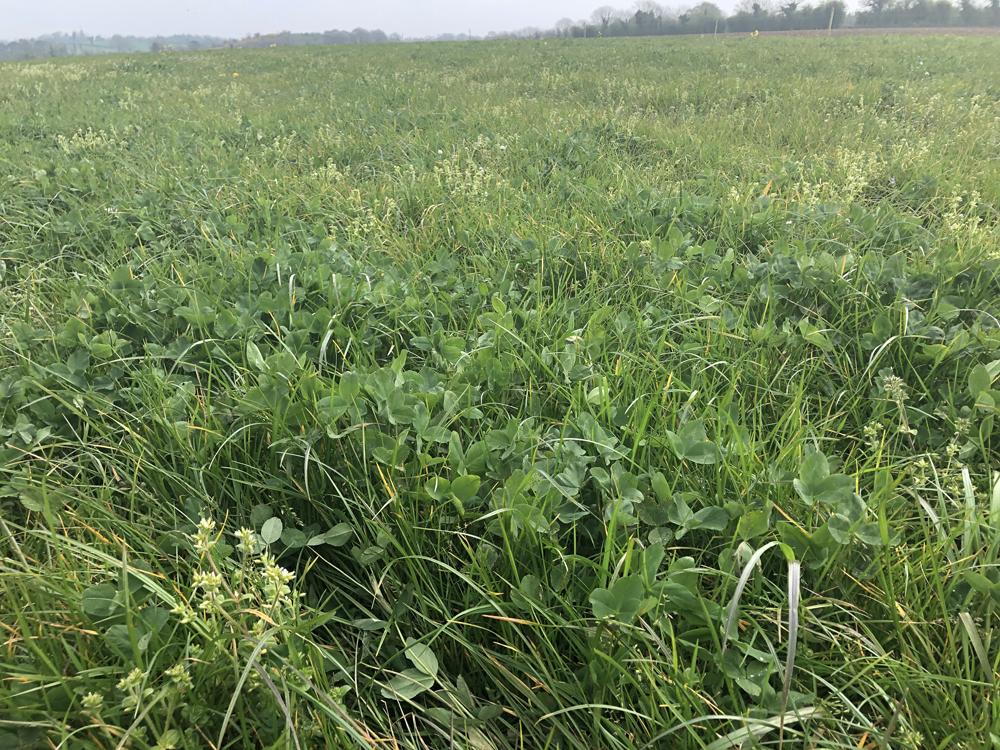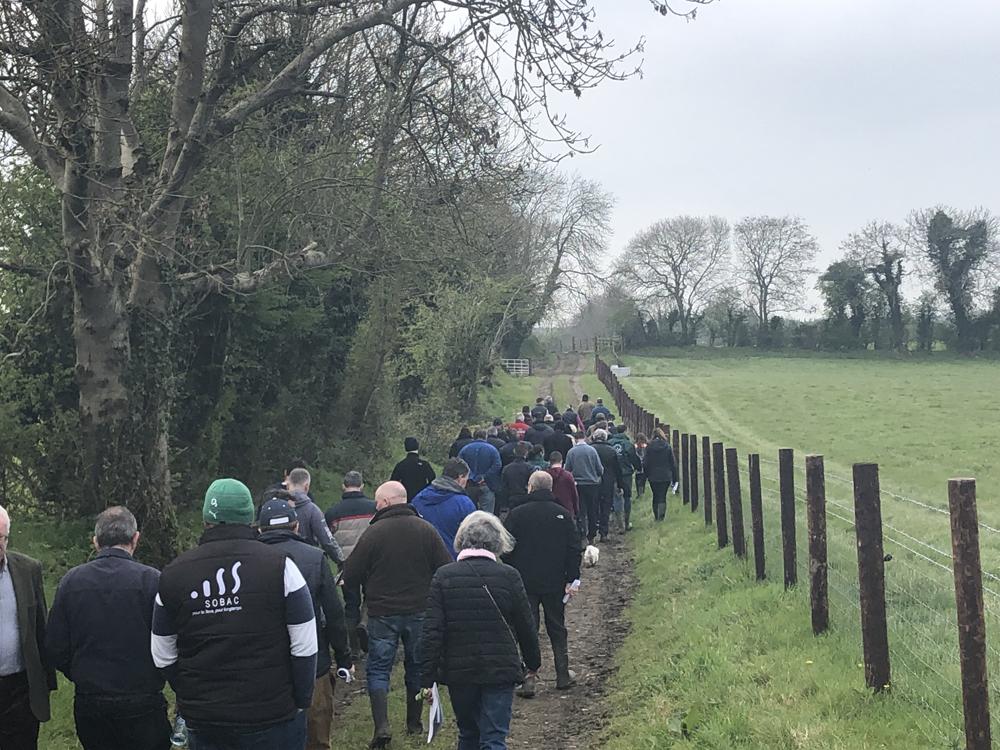“I can’t understand why more conventional farmers aren’t using it,” said Donal Keane in reference to red clover. His point was supported by Teagasc organic adviser Dan Clavin: “Red clover has the potential to deliver 14-16tDM/ha each year.”
These comments were made at a Teagasc organic beef and tillage walk held on the Keane family farm in Summerhill, Co Meath. A crowd of 70 to 80 people attended the event.

Yield
Donal, who fully converted to organic farming in 2013, said that red cover is a vital part of organic crop rotation.
"Clover drives organic farming by fixing nitrogen into the soil. It prepares the soil for tillage crops.”
Red clover is not very suitable for grazing and is in turn used mainly in silage crops. White clover is incorporated into the grazing swards instead.
Teagasc adviser Dan Calvin: Clover is key in organic rotations to fix N in the soil. Red clover is primarily used to produce silage. Has the potential to produce 14-16t DM/ha. Currently 15ac of Red Clover/Grass sward being grown. Plan to take 3/4 cuts annually, every 6-8 weeks. pic.twitter.com/JlttXbUKMe
— FJ Beef (@FJBeef) April 17, 2019
Donal is currently growing 20ac of a red clover-grass silage ley. The seed mix, when sown in 2018, was made up of an intermediate tetraploid perennial (3kg), a late diploid perennial (3kg) and a red clover variety called Milvus (5kg).
The plan for this crop is to take three to four cuts off the crop each year, with an expected yield of 3.5-4t DM/ha in each cut.

According Donal, the key with red clover silage is not to mow too low and not to wilt for too long.
"We wouldn’t mow any lower than two inches. Any lower will damage the crown of the plant and limit future growth. Excessive wilting also causes the leaves of the clover to fall off. These are what contains the protein.”
Performance
It is this protein that drives animal thrive, something that is crucial in organic livestock systems to replace expensive organic concentrates. According to Clavin, research carried out in Teagasc Grange showed that animals fed on just clover silage had the potential to gain 1kg/day, 0.4kg/day higher than perennial ryegrass silage.
Where red clover has the potential to cause problems is the delicacy of the plant. It was explained that the plant is very susceptible to machinery damage and even a heavy load has the potential to damage the plant for a number of years. Furthermore, it can’t be oversown due to its very small seed size and must therefore be sown in a conventional seedbed.
Watch out for the full report on farmersjournal.ie this weekend






 This is a subscriber-only article
This is a subscriber-only article









SHARING OPTIONS: